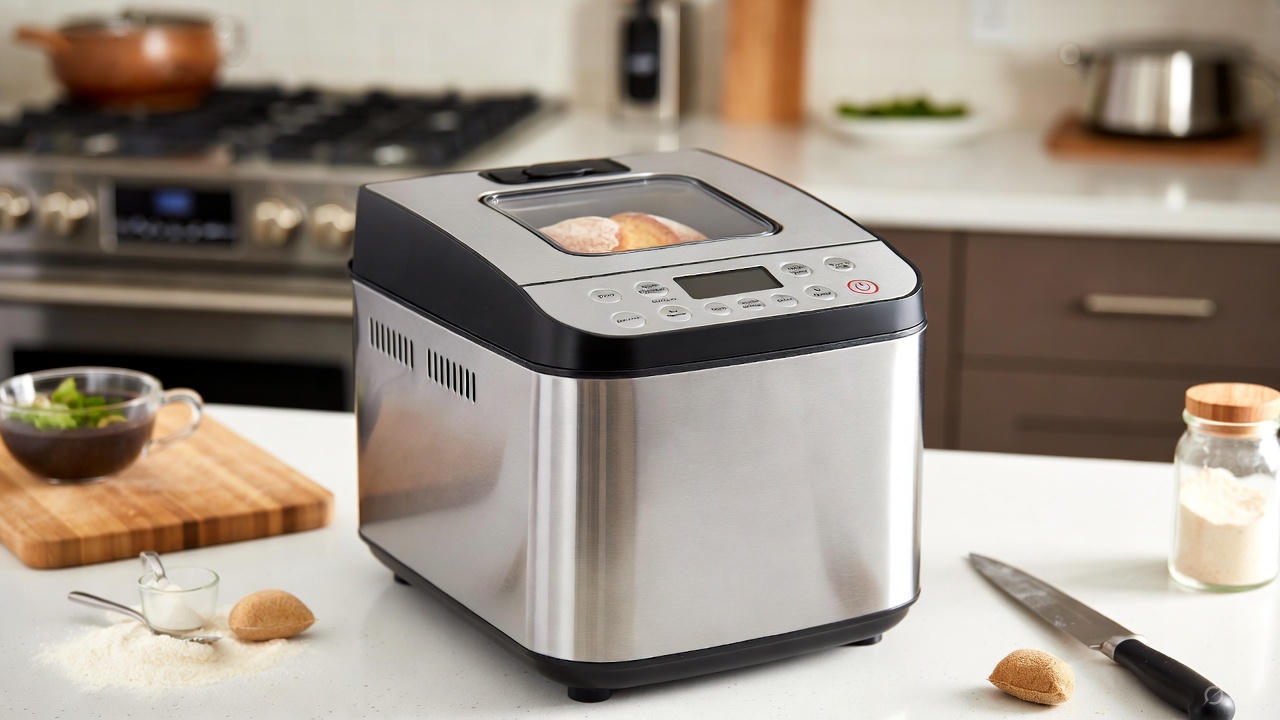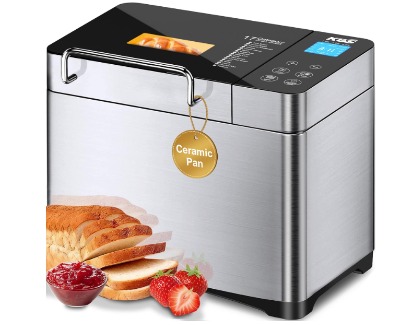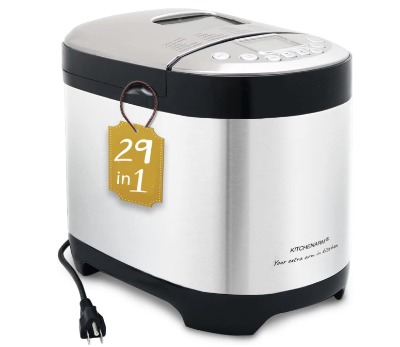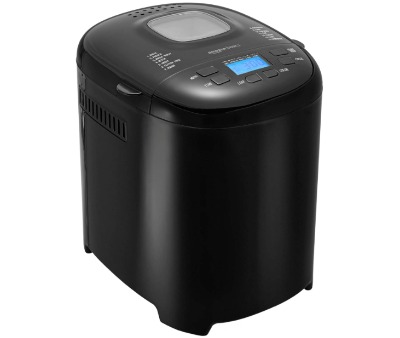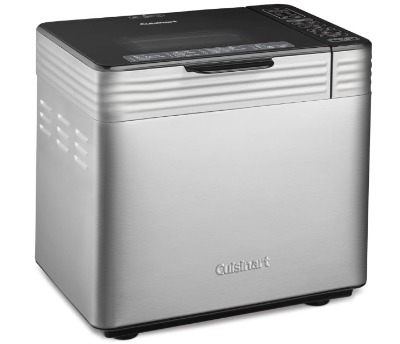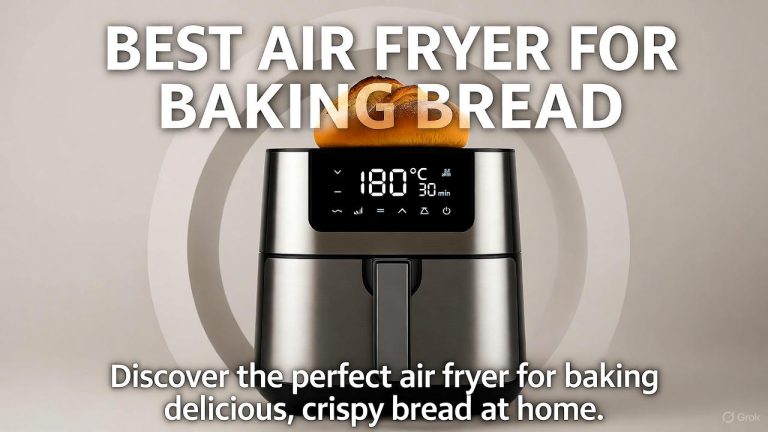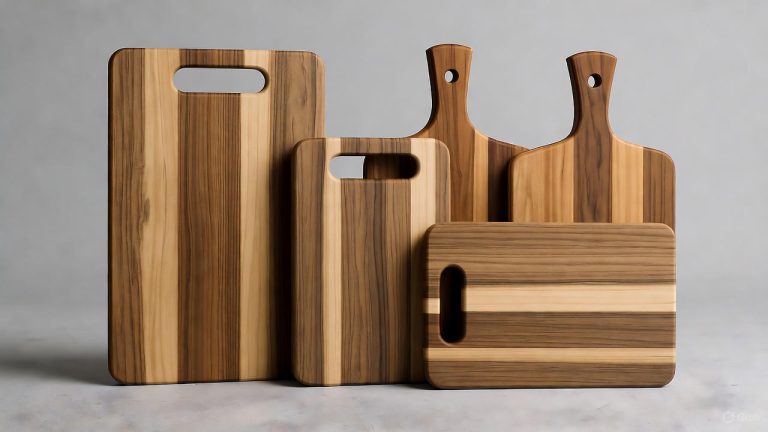5 Best Automatic Bread Maker In 2025
Nothing beats the smell of freshly baked bread filling your kitchen early in the morning. If you love homemade bread but hate the hours of kneading and waiting, an automatic bread maker becomes your best friend. These machines handle everything from mixing to baking while you go about your day.
We tested five popular bread makers to help you find the right one. Each machine brings something different to the table, so let’s dive into what makes them special.
Why You Need an Automatic Bread Maker
Store-bought bread contains preservatives, artificial flavors, and countless chemicals you can’t even pronounce. When you bake at home, you control every ingredient. Fresh bread tastes better, costs less over time, and gives you complete control over nutrition.
These machines make bread-baking simple. Just add your ingredients, press a button, and walk away. The machine kneads, rises, and bakes your bread automatically. You wake up to fresh bread or come home to a warm loaf waiting for you.
1. OSIPOTO 2LB Bread Maker Machine – Best for Beginners
Product Overview
The OSIPOTO bread maker stands out as the perfect starter machine. It offers 17 automatic programs covering everything from basic white bread to yogurt and jam. The stainless steel exterior looks sleek on any countertop, and the non-stick pan makes cleanup effortless.
This machine handles loaves up to 2 pounds, which feeds a family of four easily. You can choose from three loaf sizes (1LB, 1.5LB, 2LB) and three crust colors (light, medium, dark). The 600W motor delivers consistent results every time.
Key Features
17 Customizable Programs: The OSIPOTO offers diverse baking options. Make basic bread, French bread, whole wheat, gluten-free options, sweet bread, cake, dough, jam, and yogurt. Each program comes pre-set with optimal times and temperatures. The variety means you’ll never get bored with your bread choices.
Quiet Operation: Running at just 50 decibels, this machine won’t wake your family during early morning baking. Compare that to typical bread makers that rumble at 70+ decibels. You can set it to bake overnight without disturbing anyone’s sleep.
15-Hour Delay Timer: Set your bread to start baking up to 15 hours in advance. Program it before bed and wake to fresh bread. The one-hour keep-warm function maintains the perfect temperature after baking finishes.
360° Even Heat Distribution: The powerful motor ensures thorough kneading, while the heating element distributes warmth evenly. This creates bread with a golden crust and fluffy interior every time. No more dense spots or undercooked centers.
Beginner-Friendly Controls: The control panel uses simple buttons with clear labels. You won’t need to read a manual for hours to figure out basic operations. Just select your program, loaf size, and crust color, then press start.
Pros
- Extremely quiet operation at 50 decibels
- Non-stick pan cleans easily with just a wipe
- Large 2LB capacity perfect for families
- Simple controls ideal for first-time users
- 17 programs offer excellent variety
- Affordable price point for features offered
- Reliable 600W motor handles heavy doughs
- Stainless steel looks professional
Cons
- Takes up considerable counter space
- No automatic fruit and nut dispenser
- Manual could use better recipe translations
- Basic accessories compared to premium models
- No viewing window light
- Pan coating may need careful handling
Best For
This machine suits beginners who want reliable results without complexity. If you’re just starting your bread-making journey or need something simple and foolproof, the OSIPOTO delivers. Families who bake regularly will appreciate the large capacity and variety of programs.
2. KBS Pro 710W Bread Maker – Best Ceramic Pan Option
Product Overview
The KBS Pro sets itself apart with its unique ceramic bread pan. While most machines use Teflon coatings, KBS chose ceramic for healthier baking. The 710W motor provides extra power compared to standard 600W models, ensuring thorough kneading even with dense whole grain doughs.
This bread maker offers 17 programs and includes an intelligent fruit and nut dispenser. The tempered glass touch panel adds a modern look to your kitchen. The stainless steel housing resists fingerprints and stays cool during operation.
Key Features
Healthy Ceramic Pan: The ceramic pan uses nanotechnology for non-stick properties without chemicals like PTFE, PFOA, or BPA. It conducts heat evenly, reducing hot spots that can burn bread edges. The ceramic surface handles high temperatures better than traditional coatings and lasts longer with proper care.
710W High-Power Motor: The extra wattage makes a real difference. The motor kneads faster and more evenly, creating dough with better elasticity. It runs quieter than 600W models despite the increased power, operating at less than 40 decibels.
Automatic Nut Dispenser: The removable dispenser holds up to 3/4 cup of ingredients. It automatically releases nuts, fruits, or seeds at the optimal time during the second knead cycle. This ensures even distribution without turning your add-ins into paste.
Touch Panel Control: The intuitive touchscreen responds quickly and cleans easily. The large display shows remaining time, selected program, and current stage clearly. Tempered glass resists scratches and stays readable even after years of use.
Interior Light: Unlike many competitors, the KBS Pro includes an internal light. You can watch your bread rise and bake through the viewing window without opening the lid. This helps you learn the process and catch any issues early.
Pros
- Chemical-free ceramic pan promotes healthier baking
- 710W motor handles tough doughs effortlessly
- Automatic dispenser adds ingredients perfectly
- Interior light helps monitor baking progress
- Touch panel feels modern and responsive
- Quiet operation won’t disturb your household
- FDA approved and ETL listed for safety
- Comprehensive recipe book with 53 recipes
- Strong customer service support
- Dishwasher-safe components
Cons
- Ceramic pan needs careful handling to prevent chips
- Recipe book uses grams requiring conversions
- Touch panel can be too sensitive at times
- Larger footprint takes counter space
- More expensive than basic models
- Some translation issues in manual
- Ceramic may stain with dark bread
Best For
Health-conscious bakers who want to avoid chemical coatings will love the ceramic pan. The automatic dispenser helps busy people who don’t want to wait for the beep to add ingredients. If you enjoy watching the baking process, the interior light adds value.
3. KITCHENARM 29-in-1 SMART Bread Machine – Most Versatile Option
Product Overview
The KITCHENARM takes versatility to another level with 29 automatic programs. This includes 21 bread menus, 7 non-bread menus, and one fully customizable “Home Made” menu. The machine remembers your last settings, making it truly one-press operation for repeat recipes.
This bread maker supports both high-gluten bread flour and lower-gluten all-purpose flour. Many machines struggle with all-purpose flour, but KITCHENARM optimized its programs for both types. The 2.5-inch LCD display shows all settings clearly.
Key Features
29 Automatic Programs: The extensive menu includes basic white, sweet, French, whole wheat, dark rye, multigrain, gluten-free, brioche, ciabatta, sourdough, salt-free, sugar-free, and keto bread. Non-bread programs cover cake, jam, yogurt, pasta, and dough. The variety means you’ll never exhaust your options.
Customizable Home Made Menu: This advanced feature lets you program each bread-making cycle individually. Adjust kneading time, rest periods, rise duration, and baking temperature. Create up to four personalized menus saved in memory. This cycle-level programming usually appears only on premium models.
1-Press Memory Function: The machine saves your last-used settings including menu selection, loaf size, and crust color. When you want to make the same bread again, just add ingredients and press start. This eliminates repetitive button pushing.
Recipe Cloud Access: KITCHENARM provides hundreds of additional recipes online through their Recipe Cloud. The company also offers personalized recipe development if you contact customer service. This support goes beyond what most manufacturers provide.
Health-Conscious Design: The machine handles fresh vegetables like zucchini, onions, and oranges efficiently. It minimizes prep time while maximizing flavor. The programs accommodate various dietary needs including gluten-free, whole grain, keto, and salt-free options.
Pros
- 29 programs offer unmatched variety
- Customizable menu for advanced baking
- One-press operation saves time
- Supports all-purpose flour and bread flour
- Recipe Cloud provides endless inspiration
- 2-month free trial period
- 2-year warranty plus lifetime support
- ETL certified for North America
- Large 2.5-inch display easy to read
- Personalized recipe development available
- Stainless steel construction looks premium
Cons
- Can feel overwhelming for beginners
- Higher learning curve than simpler models
- No automatic ingredient dispenser
- Stainless steel shows fingerprints
- Pricier than entry-level options
- Must manually add nuts and fruits
- Recipe customization takes practice
Best For
Serious home bakers who want complete control over their bread will appreciate this machine. If you have dietary restrictions requiring specialized bread, the extensive programs help. People who get bored easily will enjoy exploring 29 different options.
4. Amazon Basics Programmable Bread Maker – Best Budget Choice
Product Overview
The Amazon Basics bread maker proves you don’t need to spend a fortune for quality bread. This no-frills machine covers the essentials with 14 settings and a simple LCD display. It handles loaves up to 2 pounds and offers three crust colors.
While it lacks fancy features like ceramic pans or automatic dispensers, it bakes reliable bread consistently. The compact design takes less counter space than premium models. For budget-conscious bakers, this machine delivers excellent value.
Key Features
14 Practical Settings: The programs include white, whole wheat, French, quick bread, sweet bread, gluten-free, dough, and jam. You get specialty options like ultra-fast and bake-only modes. While fewer than premium models, these settings cover most baking needs.
Non-Stick Pan: The standard Teflon-coated pan releases bread easily and cleans quickly. While not as exotic as ceramic, it works reliably and costs less to replace if needed. The pan and paddle are both dishwasher-safe.
15-Hour Delay Timer: Set your bread to bake overnight or while you’re at work. The machine starts automatically at your programmed time. Fresh bread waits for you when you wake up or return home.
Compact Design: This machine takes up less counter space than most competitors. The smaller footprint helps if your kitchen feels crowded. Despite the compact size, it still handles full 2-pound loaves.
Simple Operation: The straightforward controls work without consulting the manual constantly. Press buttons to select settings, and the LCD displays your choices clearly. Beginners appreciate the uncomplicated approach.
Pros
- Very affordable entry price point
- Compact size fits smaller kitchens
- Simple controls easy to understand
- Reliable performance for basic breads
- Dishwasher-safe components
- 14 settings cover most needs
- LCD display shows settings clearly
- Good customer reviews for reliability
- Perfect for testing if you’ll use a bread maker
- Lower replacement costs
Cons
- No convection fan for even baking
- Missing automatic ingredient dispenser
- Basic features compared to premium models
- Recipe book somewhat limited
- No interior viewing light
- Standard Teflon coating not chemical-free
- Plastic components feel less premium
- Fewer specialty programs
Best For
Budget shoppers who want to try bread making without major investment should start here. If you’re unsure whether you’ll use a bread maker regularly, this lets you test the waters affordably. Students, small households, and casual bakers find it sufficient.
5. Cuisinart CBK-210 Bread Maker Machine – Best Premium Features
Product Overview
The Cuisinart CBK-210 represents the premium end of home bread makers. It includes a convection fan for superior crust quality and even baking. The automatic fruit and nut dispenser adds ingredients at precisely the right moment. With 16 menu options and customizable programming, this machine satisfies experienced bakers.
The horizontal loaf shape produces bread that looks like bakery loaves rather than the vertical style most machines create. The convection technology circulates air during baking for crispy crusts and fluffy interiors. This attention to detail shows throughout the design.
Key Features
Convection Baking Technology: The built-in fan circulates hot air around the loaf during baking. This creates superior crust color, texture, and crispiness. The even heat distribution prevents underbaked centers and overbaked edges. Most bread makers rely on static heat, making this feature special.
Automatic Mix-In Dispenser: The compartment holds up to 3/4 cup of fruits, nuts, or other additions. During the second kneading cycle, it automatically releases ingredients and mixes them evenly throughout the dough. You don’t need to wait for a beep or manually add anything.
16 Menu Programs: Choose from white, whole wheat, French/Italian, sweet bread, quick bread/cake, low-carb, gluten-free, dough/pizza, artisan dough, sourdough starter, jam, rapid bake, and custom memory. The variety covers artisan-style breads that require special handling.
Custom Memory Programming: Create and save your own bread-making cycle. Adjust kneading time, rise periods, and baking duration to match specialized recipes. This feature usually appears only on high-end Japanese models but Cuisinart included it here.
Horizontal Loaf Pan: The traditional horizontal shape creates loaves that look like store-bought bread. Slices have the familiar shape perfect for sandwiches and toast. Many people prefer this over the tall, square slices from vertical pans.
Premium Build Quality: The stainless steel construction feels solid and durable. The measuring cup, spoon, and removal hook all come included. Cuisinart backs this machine with a 3-year warranty, showing confidence in reliability.
Pros
- Convection fan creates superior crust
- Automatic dispenser adds ingredients perfectly
- 16 programs include artisan options
- Custom memory for personalized recipes
- Horizontal loaf shape looks professional
- Premium stainless steel construction
- 3-year warranty shows quality commitment
- Produces bakery-quality bread
- Great for sourdough starters
- Well-written instruction manual
- Excellent customer support
Cons
- Most expensive option reviewed
- Convection can create darker crusts than expected
- Takes up significant counter space
- Touch panel occasionally too sensitive
- Heavier than most competitors
- Light crust setting still fairly dark
- No interior viewing light
- Replacement pan costs more than basic models
Best For
Serious bakers who want the best possible home bread should consider this machine. If you enjoy artisan breads, sourdough, and experimenting with recipes, the advanced features justify the cost. People who bake multiple times weekly will appreciate the quality construction.
Comparison Guide: Finding Your Perfect Match
By Price Range
Budget (Under $80): Amazon Basics offers the best value. You sacrifice features like ceramic pans and automatic dispensers but get reliable basic bread making.
Mid-Range ($80-$150): OSIPOTO and KITCHENARM both excel here. OSIPOTO suits beginners wanting simplicity. KITCHENARM appeals to those desiring variety and customization.
Premium ($150-$200): KBS Pro and Cuisinart CBK-210 compete at this level. KBS Pro focuses on health with its ceramic pan. Cuisinart emphasizes baking quality with convection technology.
By User Experience Level
Beginners: Start with OSIPOTO or Amazon Basics. Both offer straightforward controls and reliable results without overwhelming options.
Intermediate: KITCHENARM provides room to grow. Learn on automatic programs, then experiment with customization as you gain confidence.
Advanced: Cuisinart CBK-210 or KITCHENARM suit experienced bakers. Both allow fine-tuning recipes and creating specialized breads.
By Special Needs
Health-Conscious: KBS Pro with its ceramic pan avoids chemical coatings. KITCHENARM supports various healthy bread types including gluten-free and keto.
Dietary Restrictions: KITCHENARM offers the most specialized programs. Its 29 menus include salt-free, sugar-free, gluten-free, and keto options.
Limited Space: Amazon Basics takes the smallest footprint. If counter space limits you, this compact machine fits better than bulkier models.
Large Families: All models reviewed handle 2-pound loaves. OSIPOTO and KITCHENARM offer the most flexibility with three size options per batch.
Essential Features to Consider
Loaf Size Options
Most machines offer three sizes: 1 pound, 1.5 pounds, and 2 pounds. Consider your household size. A single person or couple does fine with 1-pound loaves. Families of four or more benefit from 2-pound capacity.
Small loaves bake faster but require more frequent baking. Large loaves last longer but must be eaten within a few days for best freshness. Match the size to your consumption rate.
Crust Color Control
Every machine reviewed offers at least three crust colors: light, medium, and dark. Some people prefer soft, pale crusts while others want crispy, golden brown exteriors.
Light works well for sandwich bread you’ll toast later. Medium suits most breads you’ll eat fresh. Dark creates artisan-style crusts with more flavor and crunch.
The convection fan in the Cuisinart tends to darken crusts more than expected. Users report the light setting produces medium-colored crusts, so adjust accordingly.
Program Variety
Basic bakers need just a few core programs: white, whole wheat, quick bread, and dough. Most people rarely use more than five or six settings regularly.
Adventurous bakers appreciate variety. If you enjoy trying new recipes and bread types, more programs prevent boredom. The KITCHENARM’s 29 options seem excessive until you start exploring them.
Specialty programs like jam, yogurt, and cake add versatility beyond bread. If you’ll use these features, they justify choosing a machine with extra programs.
Delay Timer and Keep Warm
Every machine includes a delay timer, typically 13-15 hours. This lets you add ingredients before bed and wake to fresh bread or prepare bread to finish when you return home.
The one-hour keep-warm function maintains serving temperature after baking finishes. This helps if you can’t remove the bread immediately. However, leaving bread in the machine too long can create soggy bottoms.
Automatic Dispensers
Automatic fruit and nut dispensers add convenience but aren’t essential. They release ingredients at the optimal time during kneading to prevent over-mixing.
Manual addition works fine if you’re home to hear the beep. Most machines beep when it’s time to add extras. You have about 30 seconds to add them before the next cycle starts.
The KBS Pro and Cuisinart include automatic dispensers. Other models require manual addition. Consider whether this feature matters to you.
Tips for Making Perfect Bread
Measure Ingredients Accurately
Bread baking requires precision. Too much flour creates dense, heavy loaves. Too much liquid produces gummy, collapsed bread. Use measuring cups designed for baking, not general kitchen cups.
Digital scales give the most accurate measurements. Many serious bakers weigh ingredients in grams rather than using volume measurements. This eliminates variations from flour settling or liquid splashing.
The machines include measuring cups and spoons, but they vary in accuracy. Consider investing in a quality measuring cup set if you plan frequent baking.
Use Fresh, Quality Ingredients
Expired yeast fails to rise properly. Store yeast in the refrigerator or freezer to extend shelf life. Test yeast freshness by proofing it in warm water with sugar before adding to the machine.
Quality flour makes better bread. Bread flour contains more gluten than all-purpose flour, creating better structure and texture. Whole wheat flour needs fresh grinding or proper storage to prevent rancidity.
Water temperature matters significantly. Most recipes call for water between 80-90°F. Too cold slows yeast activity. Too hot kills yeast. Room temperature liquids work best for beginners.
Add Ingredients in the Right Order
Most recipes list liquids first, then dry ingredients, with yeast last. This prevents yeast from activating prematurely. Yeast should sit on top of flour, away from liquid, until mixing begins.
Salt inhibits yeast growth, so keep it separated from yeast when layering ingredients. Place salt on one side of the flour and yeast on the other. They’ll mix during kneading.
Don’t Open the Lid During Rising
Watching bread rise through the window is tempting, but resist opening the lid. Cold air disrupts the rising process. The bread can collapse or fail to rise properly if disturbed.
Check progress through the viewing window instead. If your machine lacks a window, wait until you hear the baking cycle begin before checking.
Remove Bread Promptly After Baking
Leaving bread in the machine after the keep-warm cycle ends creates condensation. The bottom becomes soggy and tough. Set a timer to remind you when baking finishes.
Remove the loaf immediately and transfer it to a cooling rack. Let it cool at least 15 minutes before slicing. Cutting hot bread creates gummy slices because the interior hasn’t set completely.
Clean the Pan Thoroughly
Remove kneading paddles and soak the pan in warm water immediately after removing bread. Dried dough becomes difficult to clean later. Most pans and paddles are dishwasher-safe but hand washing extends their life.
Never use abrasive scrubbers on non-stick surfaces. They damage the coating and cause bread to stick. Use soft sponges or cloths with mild dish soap.
Dry components completely before storing. Moisture can cause mildew in unused machines. Store the machine with the lid open slightly to allow air circulation.
Common Problems and Solutions
Dense, Heavy Bread
Dense bread usually indicates too much flour or not enough liquid. Measure carefully and level off flour cups. Humidity affects flour absorption, so you may need slight adjustments based on weather.
Old yeast also creates dense bread. Check expiration dates and store yeast properly. If dough doesn’t rise during the cycle, your yeast has likely expired.
Collapsed or Sunken Top
Too much liquid causes bread to rise excessively then collapse during baking. Reduce liquid by one tablespoon and try again. Very humid weather requires less liquid than dry conditions.
Weak flour with low protein content can’t support the bread structure. Switch to bread flour with higher protein content. All-purpose flour works but may need gluten added.
Bread Sticks to Pan
Worn non-stick coating causes sticking. Replace the pan if coating shows damage. Lightly grease the pan before adding ingredients if sticking persists.
Remove bread immediately after baking. The longer it sits, the more likely it sticks as it cools and shrinks.
Oversized Loaf
Mushrooming over the top indicates too much yeast or liquid. Reduce yeast by 1/4 teaspoon and liquid by one tablespoon. High-protein flour needs less yeast than weaker flours.
Very warm room temperatures accelerate rising. If your kitchen exceeds 80°F, reduce yeast slightly or use cooler water.
Uneven or Lopsided Loaf
Improperly inserted kneading paddle causes lopsided loaves. Ensure the paddle clicks securely onto the drive shaft before adding ingredients.
Unleveled machine also creates uneven bread. Place the machine on a flat, stable surface. Check that it doesn’t wobble during kneading.
Making the Final Decision
Each machine reviewed offers different strengths. Your perfect bread maker depends on your specific needs, budget, and baking goals.
Choose OSIPOTO if: You want a reliable, quiet machine that’s easy to use. Perfect for beginners who need straightforward controls and don’t want complexity. The affordable price makes it a safe first purchase.
Choose KBS Pro if: You prioritize healthy baking with chemical-free ceramic pans. The automatic dispenser and powerful motor add convenience. Worth the premium for health-conscious families.
Choose KITCHENARM if: You love variety and want room to grow as a baker. The 29 programs and customizable options prevent boredom. Serious bakers appreciate the advanced features.
Choose Amazon Basics if: Budget matters most and you want to test bread making affordably. Good for small kitchens and casual bakers who don’t need fancy features. Great starter machine.
Choose Cuisinart CBK-210 if: You want the absolute best bread quality at home. The convection technology and premium construction justify the cost for serious bakers. If bread making becomes a serious hobby, this machine grows with you.
Final Thoughts
Automatic bread makers transform home baking from a time-consuming chore into an effortless pleasure. Fresh bread without preservatives, customized to your taste, ready when you want it – these machines deliver on their promises.
Start with your budget, consider your skill level, and think about how often you’ll bake. Any machine reviewed here will produce good bread. The differences come down to convenience features, build quality, and versatility.
Remember that even the best machine requires quality ingredients and basic technique. No machine can overcome old yeast or incorrectly measured flour. Learn the basics, follow recipes carefully, and you’ll soon be baking bread that rivals your local bakery.
The investment in a bread maker pays off quickly. Calculate the cost of store-bought artisan bread versus homemade, and you’ll see savings within months. More importantly, you gain control over your food and the satisfaction of creating something wonderful from simple ingredients.
Whichever machine you choose, start simple with basic white or whole wheat bread. Master the fundamentals before attempting complex artisan loaves. Build your skills gradually, experiment with recipes, and soon you’ll wonder how you ever lived without your bread maker.

